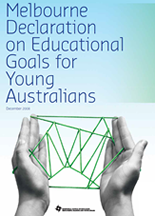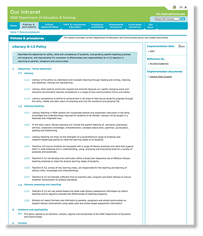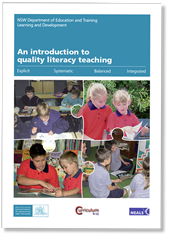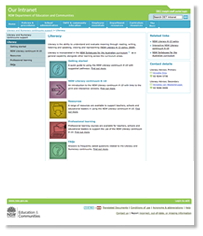
Australia values the central role of education in building a democratic, equitable and just society—a society that is prosperous, cohesive and culturally diverse, and that values Australia’s Indigenous cultures as a key part of the nation’s history, present and future.
Melbourne Declaration1
Within these goals, the value of literacy is prioritised in the Australian Curriculum, being described as the intrinsic and interdependent relationship between social context, meaning and language.
As a concept and a practice, literacy is a horizon rather than a destination. We are never literate enough. Nor is literacy ever finished or complete. Literacy is fluid, slippery, multiple, and context-dependent… literacy is made flesh as it is embodied and enacted with real people and in real contexts, thus producing real outcomes and real contexts in the worlds we live in. Literacy, as ever, matters.
Miller and Schultz, in English in Australia, Vol 49 No 3 2014 p.78
Literacy is not language specific and nor is literacy the same as the study of a language which is a different academic field.
For support and advice about planning for the study of the subject English, please refer to the NSW DoE Implementing new curriculum website.2
The following resources provide the basis for quality literacy teaching and learning in all subjects K-12 in NSW DoE schools.
 3 3 |
 4 4Introduction to quality literacy teaching4 |
 5 5 |
Literacy is the ability to understand and evaluate meaning through
reading and writing, listening and speaking, viewing and representing.
Policy statement 1.1.1 NSW Literacy K–12 Policy, 2007
This definition appears to be a simple one. However, we know that literacy is not a simple issue. The complexity in this definition lies in two of these two elements of literacy itself - the purposes for literacy, and the modes of communication used.
Explore this definition in Activities 1a and 1b below.
|
|
Our NSW DoE definition of literacy includes the dual purposes of literacy - to understand and to evaluate. Use the image (exit sign) to consider the following questions. Discuss these with a colleague and record your answers in your Activity booklet. 
|
|
|
The NSW definition of literacy identifies six modes of communication - reading, writing, listening, speaking, viewing and representing. Students use a variety of modes of communication in every subject. However, each subject requires students to use these modes in different ways. Consider what each of the modes of communication looks like in your subject. Record your response to the following in your Activity booklet:
|
|
|
We’ll now focus on the two key elements - purposes for literacy and the modes of communication as described in four syllabus areas. Explore descriptions of the key elements of literacy in these NSW BOSTES syllabuses for the Australian curriculum: Reference: Board of Studies, Teaching and Educational Standards Syllabuses6 |
|
|
Record your discussion and reflection on the following questions in your Activity booklet:
|
Literacy is the ability to understand and evaluate meaning through
reading and writing, listening and speaking, viewing and representing.
Policy statement 1.1.1 NSW Literacy K–12 Policy, 2007
It is clear that the modes of communication are used differently in each subject. This difference is because of the varied ways that students are required to understand and evaluate meaning.
It is precisely this that makes the literacy of each subject unique. As Professor Peter Freebody describes it, literacy is ‘put to work’ differently in each subject.
Therefore, literacy needs to be explicitly taught within the context of each subject. The responsibility of teachers to do this is clearly articulated in the NSW literacy policy:
Teachers K-12, across all key learning areas, are responsible for the teaching and learning of literacy skills, knowledge and understandings.
Policy statement 1.2.6 NSW Literacy K-12 Policy, 2007
|
|
Optional – view the video by Professor Peter Freebody, Literacy across the curriculum7. |
Literacy is the ability to understand and evaluate meaning through
reading and writing, listening and speaking, viewing and representing.
Policy statement 1.1.1 NSW Literacy K–12 Policy, 2007
Links
- http://www.yooyahcloud.com/SCLO/ZMXEwb/Melbourne_Declaration_on_Educational_Goals_for_Young_Australians.pdf
- https://detwww.det.nsw.edu.au/australiancurriculuminnsw/professional-learning/curriculum
- https://detwww.det.nsw.edu.au/policies/curriculum/schools/literacy/PD20050288_i.shtml
- https://detwww.det.nsw.edu.au/curr_support/literacy/intro_qlt_v2.pdf
- https://detwww.det.nsw.edu.au/literacy-and-numeracy-support/literacy
- http://syllabus.bos.nsw.edu.au/
- http://www.nlnw.nsw.edu.au/vids2012/12211-freebody/vid12211.htm


